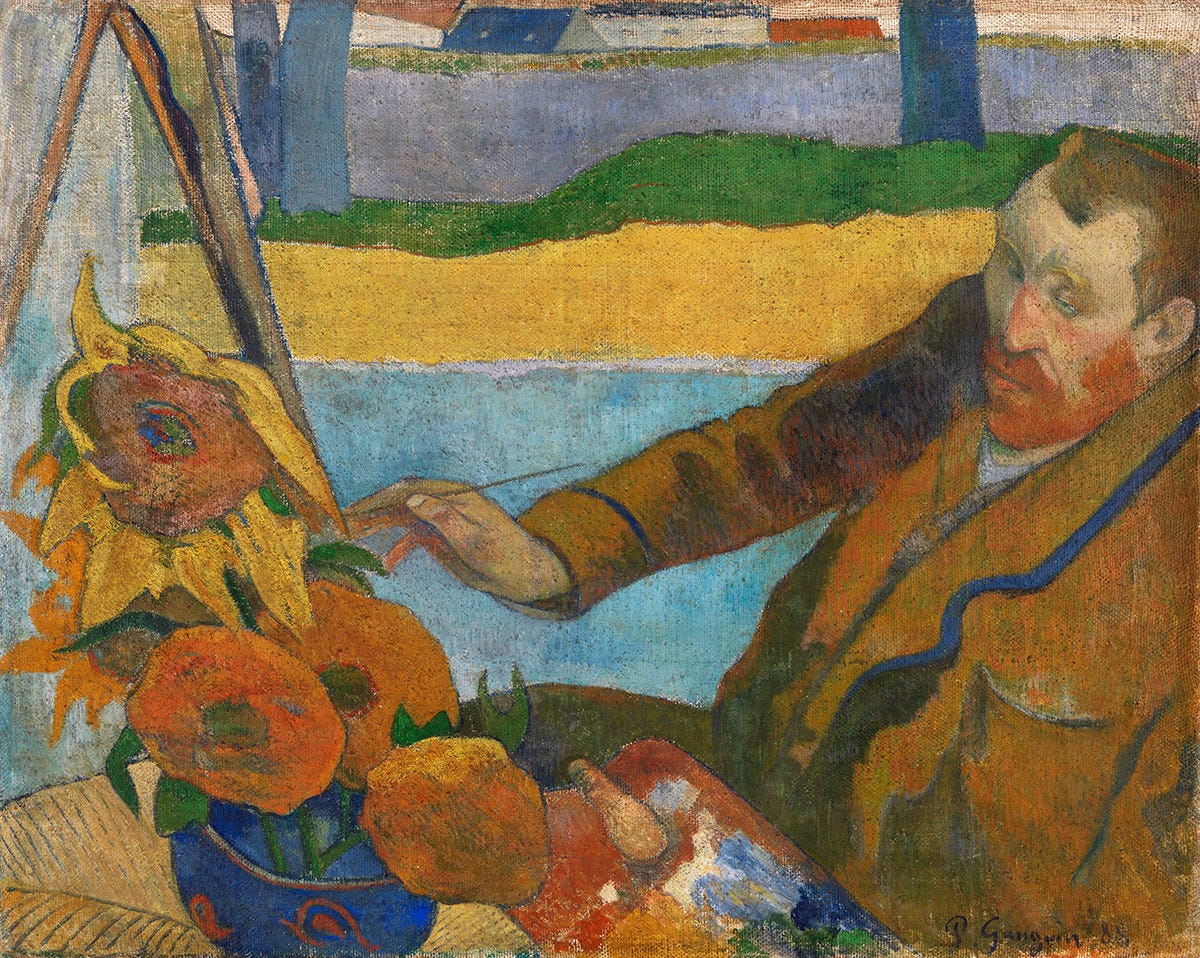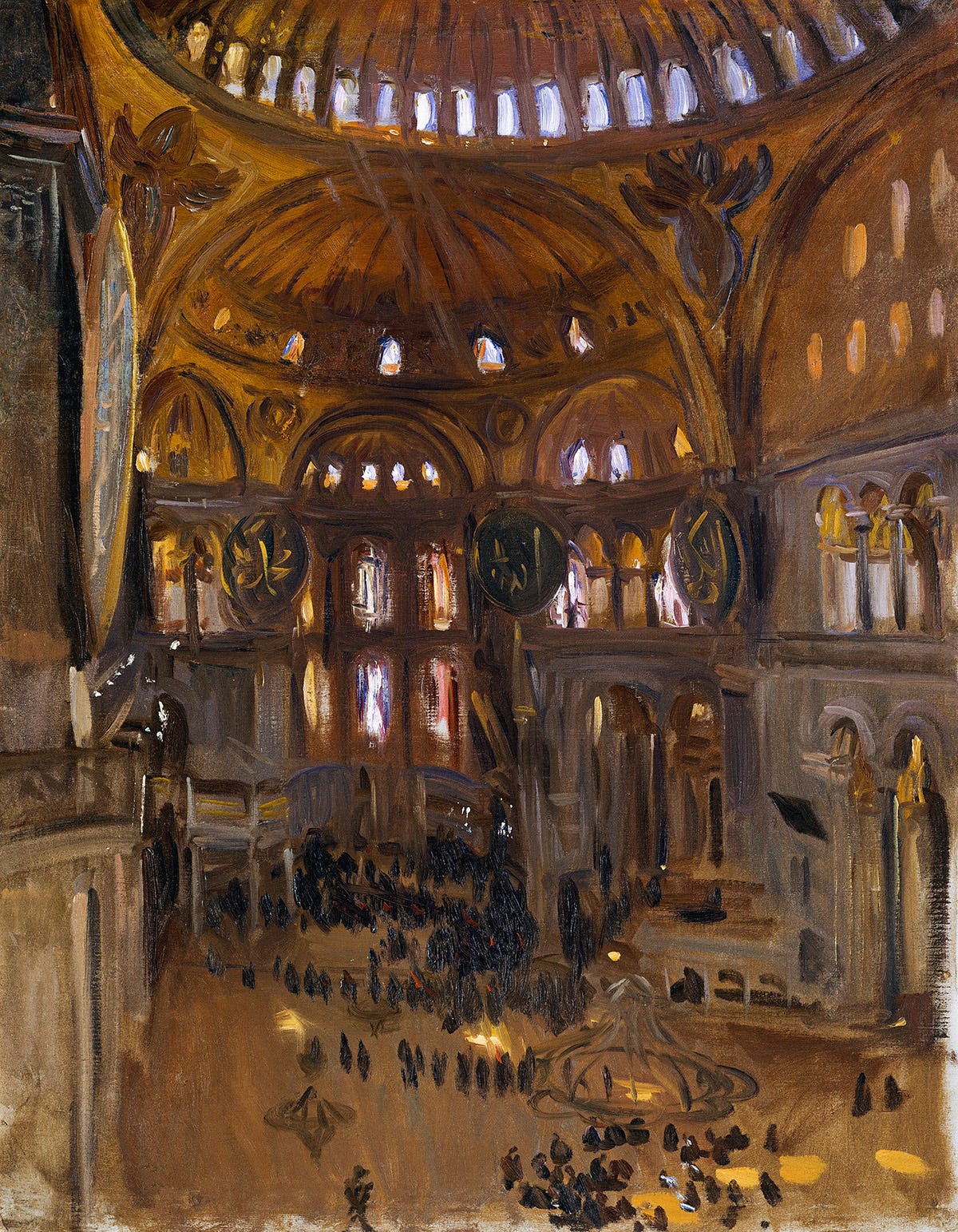In an ecumenical panel discussion at the Artists’ Gathering held in the picturesque Cape Winelands of South Africa, a diverse group of pastors from various denominations and backgrounds came together to explore the value of the arts in both historical and contemporary Christian contexts. The panellists included Rev Carel Pienaar, Dr Angelique Havenga, Mandla Nyathi and Stephan Cloete.[1] Discussion questions were carefully formulated in response to a survey that had been circulated to the wider Artists’ Gathering community by organisers Heidi Salzwedel and KRUX Arts director Ydi Carstens. The rich dialogue, steeped in a wealth of theological insights and personal experiences, underscored the profound role of the arts in spiritual reflection, worship and community engagement across the ages.
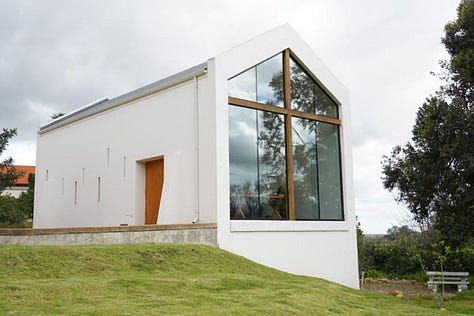

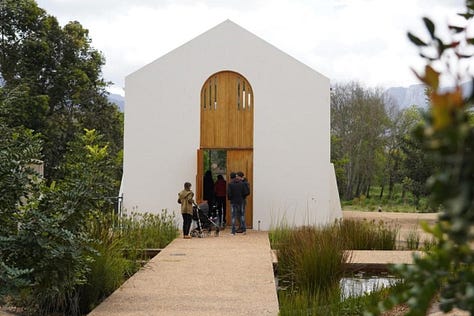
Historical Context for the Arts – Carel Pienaar
It was a crisp Saturday afternoon in spring and artists made their way to the main hall after enjoying a hearty lunch together at the Andrew Murray Centre for Spirituality in Wellington, South Africa. The conversation began with a reflective look into the historical significance of the arts in Christian religious practice. Rev Carel Pienaar, who specialised in early church history, emphasised two main concepts: the importance of symbols and of indigenising one’s faith.
In early Christian art, the symbols in catacombs were used as a form of identity and for teaching. A fish (ichthus: an acronym for “Jesus Christ, Son of God, Saviour” in Greek) was used to point out Christian identity in secret in an age of acute persecution for the early church. Carel explained how symbols need interpretation, and that the symbol and the interpretation unlock one another with a tremendous synergy. He emphasised how artists have the privilege of creating and depicting the symbols that are identity markers and as such are able to instruct a community.
He also highlighted the power of visual arts in contextualising the gospel; that there is value in creatively and culturally interpreting one’s faith in art forms that are unique to one’s own culture. Early Greco-Roman Christians indigenised their art forms as a community and “made it their own.” They grasped the gospel culturally, and by implication aesthetically too, and this is what gave them deeper roots in their expression of faith. He explained that when your faith becomes contextualised and part of the soil, then you can see that people have “got it.”
Contemporary Reflections on Art and Spirituality – Angelique Havenga
Angelique Havenga suggests that, in the early church, artists helped Christians to discover what it means to become more fully human. Now artists need to do the same: help Christians to re-discover what it means to be human, but to go further and discover what this re-humanising process might mean amidst a dehumanising digital age. Art, in this view, is not merely decorative but sacramental, bridging the divine and the mundane, and inviting individuals to a more profound experience of the holy. She paints a scene of what her role as a pastor of students is like:
As a pastor serving students every day I’m acutely aware of this strange new world we live in, one that is driven by many forces that dehumanise, disembody and reduce us to names on a screen, account information on a bank statement, or a title on a worksheet, and I know there are some students here so I can also add a student number on a plastic access card. It is a world marked by virtual experiences; avatars, likes, reactions, algorithms, watch times and by market driven economies. It is marked by political polarisation, digitisation, and the continuous advancement of technology, and it’s amidst these realities where we need to navigate what it means to be a Christian now.
Angelique offered a few solutions to the issue of dehumanisation and called artists to action. She believes the role of artists is significant in both the church and society today in the pursuit of becoming more fully human. The arts help people to know that they are embodied beings that live within a timeframe, a specific location and in community with others. Art teaches humans to engage with our own embodiment because it has to do with materiality, sound, form, texture and colour; with things we can experience with our senses.
“Artists invite us back into ourselves,” she argues, and goes on to explain that we are called into our bodily existence by touching, taking in aromas, hearing and by what we see – to experience again what it means to be fully alive. Part of being alive is to feel. Art also reminds us of our emotions and it conjures up joy but also allows us to lament. Art helps us to see so much further into the complex human emotional experience than the WhatsApp emojis on our devices.
Biblical Mandate for the Arts and Some Disconnects between Artists and Church – Mandla Nyathi
Mandla outlined three main ideas: the biblical instruction to beautify the tabernacle, the artist’s ability to show the holy in the everyday, and lastly, a few thoughts on how the church can better celebrate the arts.
He explained that the first biblical mention of the Spirit within a person was about the artist, Bezalel, in Exodus 31. He was tasked with beautifying the tabernacle, God’s chosen place for worship, highlighting the importance placed on artists by God. It is a mandate that God gives to the artist by breathing his spirit into him and thus providing the ability to create according to God’s patterns. Bezalel and his assistants were given instructions about the materials and specifications of the work too. While in the past God gave specific instruction to artists on how to beautify the tabernacle, today, argued Mandla, he gives artists the role of inscribing the holy into the everyday through beauty.
Artists reveal God’s beauty in everyday things, helping others see and appreciate the holy in the ordinary. Mandla quoted the passage from Isaiah: “Heaven’s my throne, earth is my footstool. What sort of house could you build for me?” (Isa 66:1–2, The Message) and went on to aptly pose some helpful rhetorical questions:
What does it look like for us [artists] to bring out the beauty and the glory of those things pointing to the wonder of
God …? How do we take the normal things of every day and bring out the wonder and the glory of those things?
He concluded his presentation by suggesting that there is a disconnect between the church and artists due to a lack of celebration of everyday creativity and the sacredness of creation. He reminds us that you “get what you celebrate.” One of the things we need to do is create opportunities within the church context that celebrates the arts. Too often the communication between a church leader and an artist is something like: “I know you’re doing that, and I give you my blessing, but don’t talk about us being part of it.” He suggests that there is another way; a way where people feel like the arts are part of the church. Mandla ran a creative programme in Cape Town called “That Beautiful Thing,” where creatives were celebrated and encouraged. It was not a church but was linked with one. Many artists ended up visiting and joining churches afterwards because of first and foremost being encouraged and “seen” as the persons that they are.
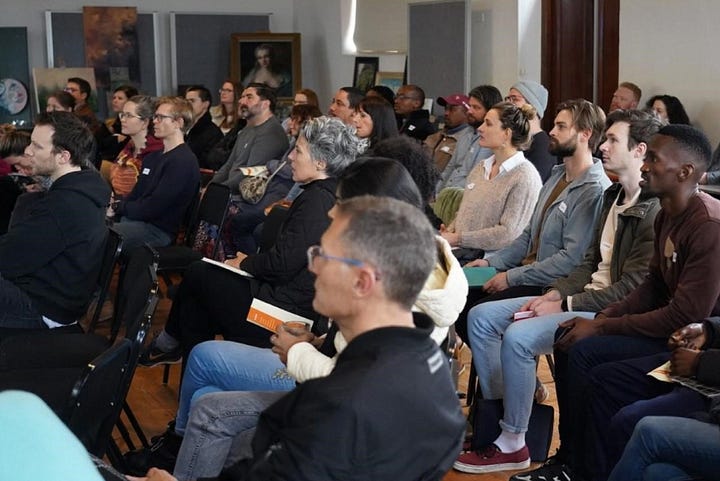
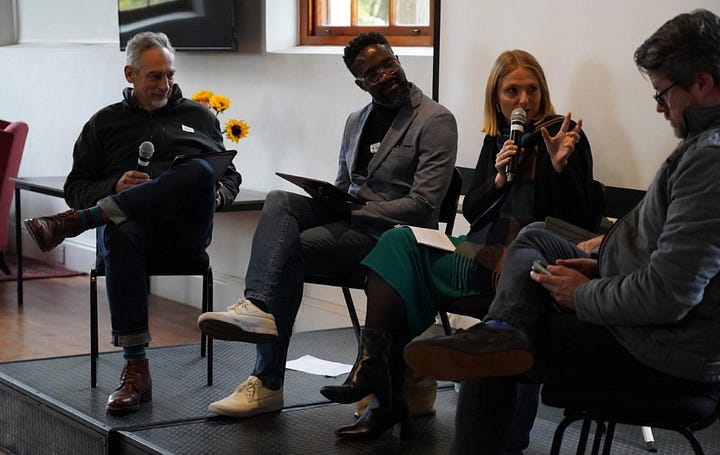

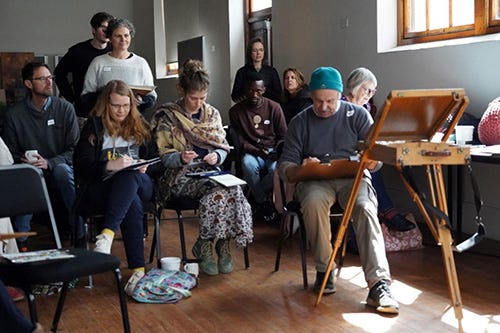
Practical Applications for Artists and the Church – Stephan Cloete
Finally, Stephan Cloete, from his experience as a worship pastor, suggests a few practical applications in church congregations. Stephan firstly told his story of how he, as a teenager, was drawn into worship. He got involved in a worship team at a local Methodist church and it became his life very quickly. Twenty-five years later he is still leading congregational worship.
He mentioned a useful idea by Gideon Strauss called the “hospitality framework” wherein God creates a space and then fills it with life – much like God created the earth and then filled it with living things. He mentioned that God performed an “act of creating a space that is [firstly] able to contain life” and then we as his creative handiwork are making spaces of worship here, and we’re making those spaces hospitable. We are co-creators with God in this ongoing place of creation. He recommended reading Aaron Niequist’s The Eternal Current: How a Practice-Based Faith Can Save Us from Drowning.[2] What he gleaned from the book is that the church should function like a gymnasium, where regular practice and engagement lead to spiritual growth and transformation. We are what we habitually practise. Artists should focus on stepping forward in their churches and creating environments that encourage participation and collaboration, rather than mere consumption. Sometimes an artist will need to demonstrate to the congregation what is possible through creativity.
The panel discussion shed light and offered much food for thought on the integral role of art in both historical and contemporary contexts within the church. The insights that were shared emphasised the need for a deeper connection between the church and its artists, fostering a space where creativity can thrive and facilitate spiritual formation. As artists, we are called to be co-creators with God, using our talents to create hospitable spaces. However, this journey is not without its challenges. The lack of understanding and support for artists can be deeply discouraging. Financial struggles often overshadow the significance of the artists’ role in society, leading many creatives to lose track of their calling. But we must remember that our work as artists is vital. We have the God-breathed mandate to create. The panellists collectively called for a renewed commitment within the church to embrace and support the arts, not as an optional embellishment but as a core component of worship and mission.
Heidi Salzwedel is an artist, writer and educator who lives and works in Cape Town, South Africa. She is a member of KRUX and one of the founders of the annual Artists’ Gathering conference.
For more about KRUX visit www.krux.africa. Watch the full panel discussion and more about the history of the Artists’ Gathering on @kruxmedia206 on YouTube.
All photos of the event were taken by Cristan Barnard, a member of KRUX, and are used with permission.
[1] Rev Carel Pienaar serves at Gracefields Church in Fish Hoek, Cape Town and has an MA in Church History and Dogma. Dr Angelique Havenga is an ordained minister in the Dutch Reformed Church and serves at Stellenbosch Moederkerk/Kruiskerk. Her research interests include sacramental theology, the Eucharist, and theological readings of popular culture. Stephan Cloete teaches Music Production at the Pneumatix Arts Academy and is the worship pastor at Stellenbosch Gemeente Church. Mandla Nyathi was formerly a pastor with Every Nation Church and now leads a creative platform called Epiphany.
[2] Aaron Niequist, The Eternal Current: How a Practice-Based Faith Can Save Us from Drowning (Colorado Springs, CO: WaterBrook, 2018).





